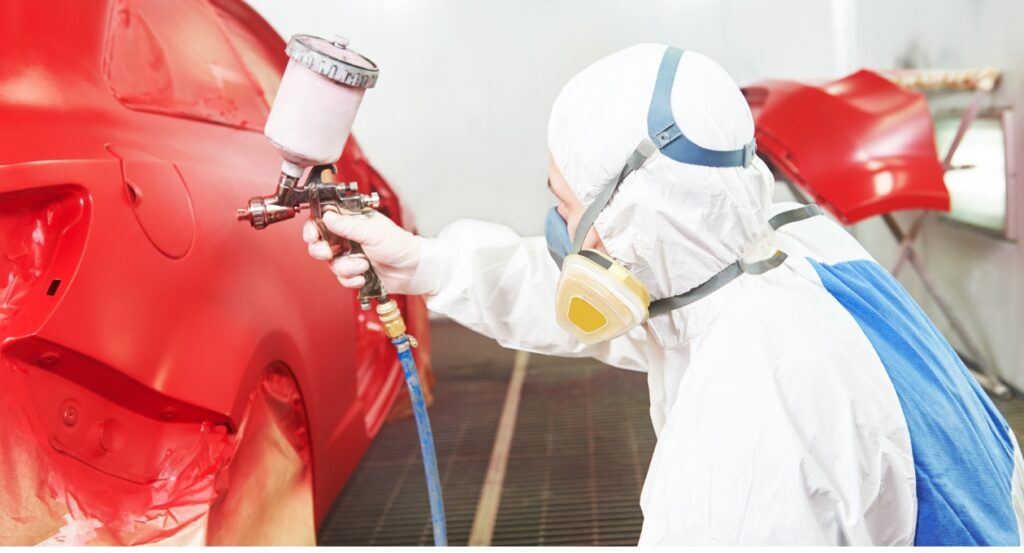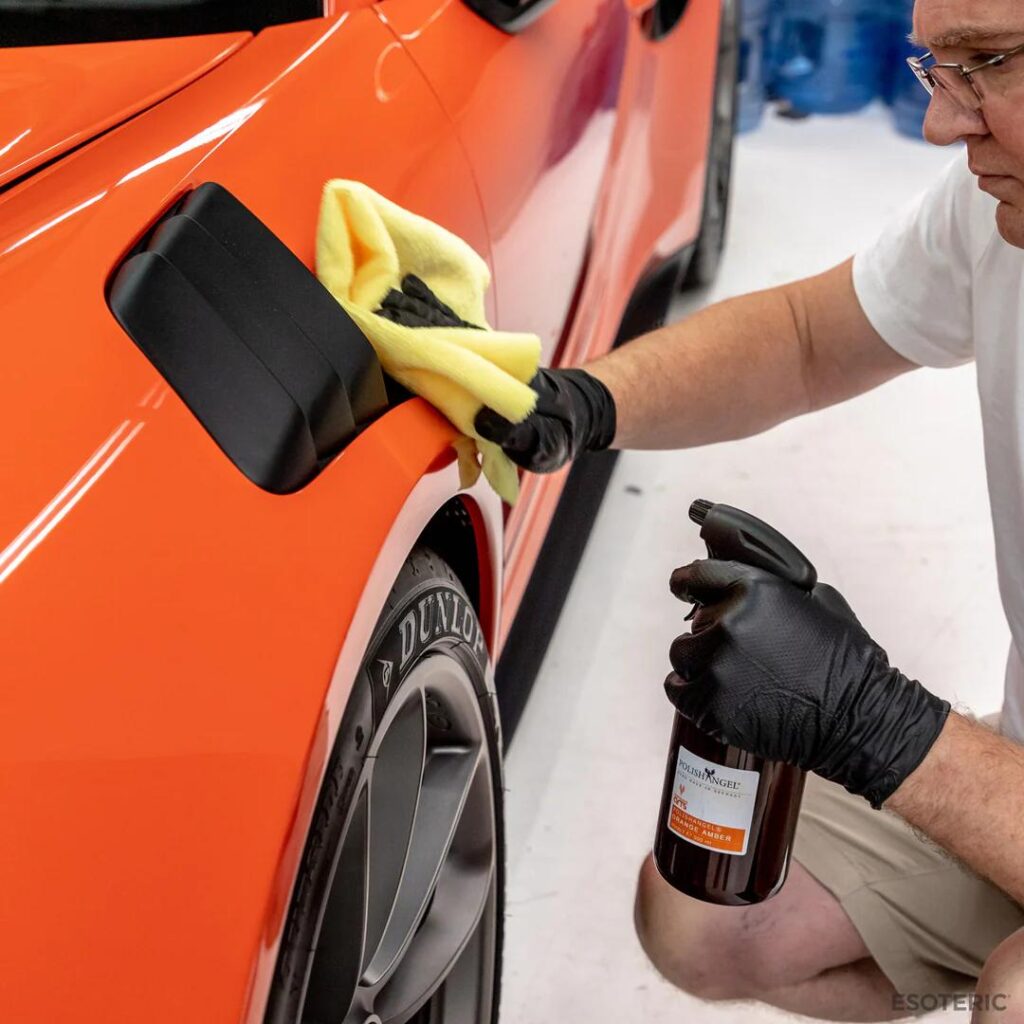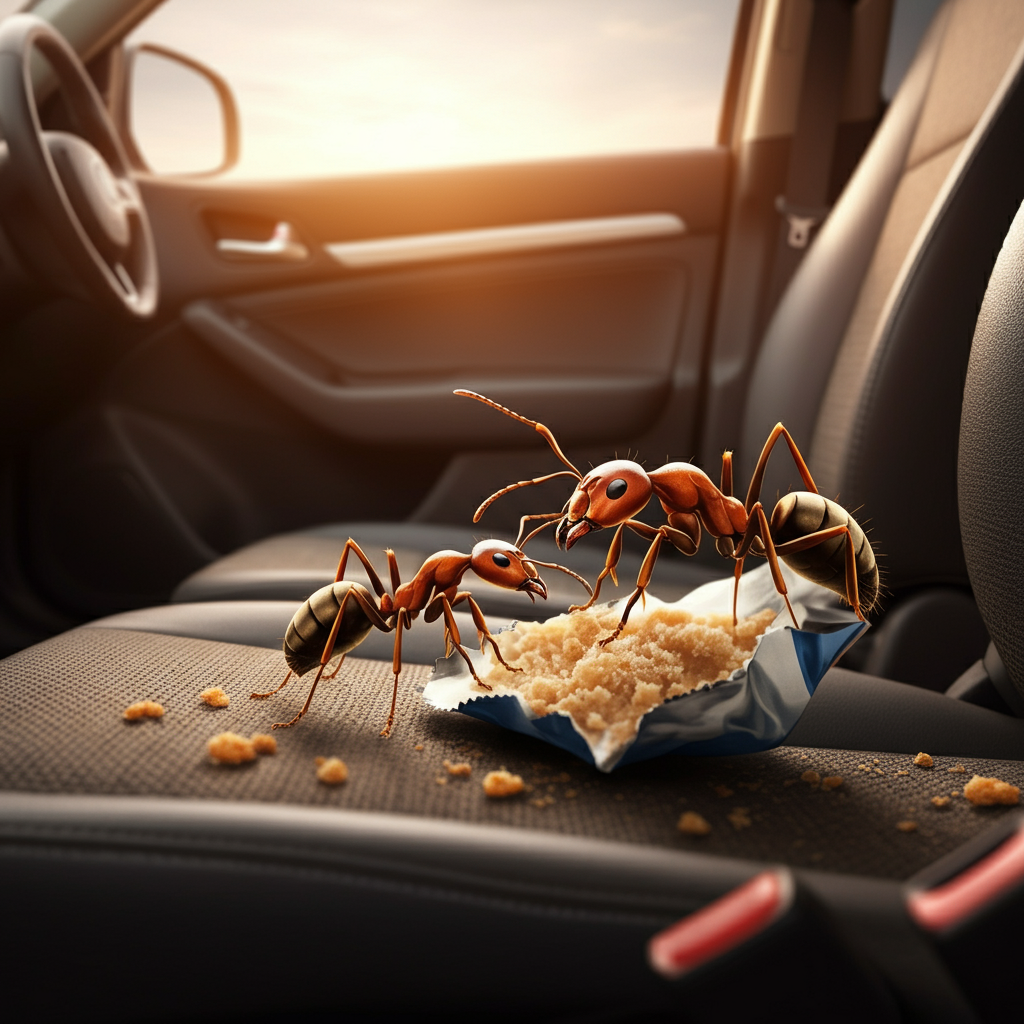As an Amazon Associate, I earn from qualifying purchases
Nothing makes a car look older than chalky, faded paint. If your vehicle’s once-vibrant color has turned dull and lifeless, you’re likely dealing with paint oxidation. The good news? You don’t need to spend thousands on a professional paint job to bring back that showroom shine.
Paint oxidation is a common problem that affects most vehicles, especially those regularly exposed to sunlight and harsh weather conditions. While it might seem like permanent damage, most cases of oxidized paint can be restored with the right techniques and products.
This comprehensive guide will walk you through everything you need to know about fixing oxidized car paint. You’ll learn what causes this frustrating problem, how to assess the damage, and most importantly, how to restore your car’s finish using proven methods that work. We’ll also cover the best products to use and share expert tips to prevent oxidation from returning.
Whether you’re dealing with light surface oxidation or more severe chalking, these step-by-step instructions will help you achieve professional-quality results from your own garage. Let’s get started on bringing your car’s paint back to life.

Table of Contents
- 1 Why Oxidation Happens & Its Effects on Car Paint
- 2 How to Fix Oxidized Car Paint (Step-by-Step Guide)
- 3 Best Products for Fixing Oxidized Car Paint: Polishes, Compound, and Wax
- 4 How to Prevent Oxidation from Happening Again (Maintenance Tips)
- 5 Frequently Asked Questions About Fix Oxidized Car Paint.
- 6 Restore Your Car’s Beauty and Value
Why Oxidation Happens & Its Effects on Car Paint
Understanding paint oxidation starts with knowing how your car’s paint system works. Modern automotive paint consists of multiple layers: primer, base coat, and clear coat. The clear coat serves as the protective barrier against environmental damage, but it’s not invincible.
Oxidation occurs when oxygen molecules interact with the paint’s surface over time. Ultraviolet rays from the sun accelerate this process by breaking down the chemical bonds in the clear coat. As these bonds weaken, the paint loses its ability to reflect light properly, resulting in that characteristic dull, chalky appearance.
Several factors speed up oxidation. Constant sun exposure is the primary culprit, which explains why cars parked outdoors fade faster than garage-kept vehicles. High temperatures amplify UV damage, while humidity creates conditions that allow oxidation to penetrate deeper into the paint layers. Environmental pollutants, road salt, and even bird droppings can create chemical reactions that worsen the problem.
The effects of oxidation extend beyond appearance. As the clear coat deteriorates, it becomes less effective at protecting the underlying paint layers. This can lead to more serious problems like color fading, paint peeling, and eventually, rust formation on metal surfaces. Early intervention is crucial because severe oxidation may require professional repainting rather than simple restoration.
You can identify oxidation by running your hand across the paint surface. Oxidized paint feels rough and may leave a chalky residue on your fingers. The color appears faded and lacks the deep, glossy finish of healthy paint. In advanced cases, you might notice actual flaking or peeling of the paint layers.
How to Fix Oxidized Car Paint (Step-by-Step Guide)
Restoring oxidized paint requires patience and the right approach. Before starting any repair work, you’ll need to assess the severity of the damage. Light oxidation appears as a dull finish that still retains some gloss, while moderate oxidation shows obvious fading and chalking. Severe oxidation involves paint that’s completely chalky with possible flaking or peeling.
Start by gathering your materials. You’ll need automotive soap, microfiber towels, polishing compound, car polish, car wax, and either a dual-action polisher or applicator pads for hand application. Work in a shaded area when temperatures are between 60-80°F for optimal results.
Step 1: Thorough Cleaning
Begin with a complete wash using automotive soap and the two-bucket method. This removes surface dirt and contaminants that could scratch the paint during polishing. Pay special attention to oxidized areas, as they tend to trap more debris. Rinse thoroughly and dry with clean microfiber towels.
Step 2: Clay Bar Treatment
For moderate to severe oxidation, use a clay bar to remove embedded contaminants. Spray clay bar lubricant on a small section and gently glide the clay across the surface. The clay will pick up particles that washing missed. Work in straight lines rather than circles, and fold the clay frequently to expose clean surfaces.
Step 3: Apply Polishing Compound
This is where the real restoration begins. Apply a small amount of polishing compound to your applicator pad or polisher. Work in 2×2 foot sections, applying moderate pressure. If using a machine polisher, start at low speed and gradually increase. For hand application, use circular motions followed by straight back-and-forth passes.
The compound will initially make the paint look worse as it removes the oxidized layer. This is normal. Continue working until you see the compound becoming clear and the paint’s color beginning to return. Remove residue with a clean microfiber towel before moving to the next section.
Step 4: Polish for Clarity
After compounding, apply a finer polish to restore clarity and depth. This step removes micro-scratches left by the compound and prepares the surface for wax. Use the same sectional approach, but with lighter pressure. Polish should go on and come off easily, leaving behind a smooth, glossy surface.
Step 5: Protect with Wax
The final step involves applying a high-quality car wax or paint sealant. This creates a protective barrier against future oxidation. Apply thin, even coats and allow to haze before buffing off with a clean microfiber towel. Some products may require multiple coats for maximum protection.
Best Products for Fixing Oxidized Car Paint: Polishes, Compound, and Wax
Choosing the right products can make the difference between mediocre and exceptional results. Different levels of oxidation require different approaches, so understanding your options is essential.
For polishing compounds, look for products specifically designed for oxidation removal. Abrasive compounds contain fine particles that physically remove the damaged paint layer. Medium-cut compounds work well for moderate oxidation, while heavy-cut compounds tackle severe cases. Popular options include Meguiar’s Ultimate Compound and Chemical Guys V-Series compounds.
Dual-action polishers provide the most consistent results and reduce the risk of burning through paint. These machines oscillate while rotating, mimicking hand motion but with greater efficiency. Beginners should start with lower speeds and work up as they gain confidence. If you prefer hand application, high-quality microfiber applicator pads distribute product evenly and minimize marring.
Polish selection depends on your desired finish. All-in-one products combine polishing and protection, making them convenient for light oxidation. For better results on moderate to severe oxidation, use separate polishing and protection steps. Finishing polishes like Menzerna Super Finish or Griot’s Garage Polish create exceptional clarity.
Wax and sealant choice affects both appearance and longevity. Carnauba waxes provide warm, deep gloss but require more frequent reapplication. Synthetic sealants last longer and offer better protection against UV rays and environmental contaminants. Paint coatings represent the premium option, providing years of protection with proper maintenance.
Consider your climate and usage patterns when selecting products. Cars in sunny, hot climates benefit from UV-resistant sealants, while vehicles in harsh winter conditions need protection against road salt and temperature extremes. Read product reviews and follow manufacturer instructions for best results.
How to Prevent Oxidation from Happening Again (Maintenance Tips)
Prevention is always easier and more cost-effective than restoration. Once you’ve restored your car’s paint, maintaining that finish requires consistent care and smart choices about storage and protection.
Regular washing forms the foundation of paint protection. Wash your car every two weeks using proper techniques and quality products. Avoid dish soap, which strips protective wax layers. Instead, use pH-balanced automotive soap that cleans effectively without removing protection. The two-bucket method prevents recontamination of your wash water.
Apply protective coatings every three to six months, depending on the product type. Carnauba waxes typically last 2-3 months, while synthetic sealants can protect for 6-12 months. Paint coatings may last several years but require specific maintenance products. Regular reapplication ensures continuous protection against UV rays and environmental damage.
Parking strategies significantly impact paint longevity. Garage parking provides the best protection, but covered parking or even shade trees help reduce UV exposure. If outdoor parking is unavoidable, consider a high-quality car cover designed for your climate. Covers protect against sun, bird droppings, tree sap, and other contaminants.
Quick response to contamination prevents permanent damage. Bird droppings, tree sap, and bug splatter become harder to remove and more damaging the longer they remain on paint. Keep detailing spray and microfiber towels handy for immediate cleanup. For stubborn contaminants, use specialized removers rather than scrubbing with harsh materials.
Seasonal maintenance addresses specific challenges. Summer care focuses on UV protection and frequent washing to remove road film and insects. Winter preparation includes applying extra protection against road salt and switching to gentler washing methods when temperatures drop. Spring cleaning removes winter contaminants before they cause permanent damage.
Professional maintenance can extend the time between major restoration projects. Annual paint correction services address minor imperfections before they become major problems. Consider professional application of paint coatings if you want maximum protection with minimal maintenance effort.
Frequently Asked Questions About Fix Oxidized Car Paint.
Can I fix oxidized car paint myself?
Yes, most cases of paint oxidation can be successfully restored using DIY methods. Light to moderate oxidation responds well to polishing compounds and proper technique. However, severe oxidation with paint flaking or peeling may require professional intervention or repainting. Start with the least aggressive approach and work up as needed.
How long does the oxidation repair last?
The longevity of oxidation repair depends on several factors: the quality of products used, application technique, environmental conditions, and maintenance routine. Properly restored paint with quality protection can last 6-12 months before requiring touch-up work. Regular maintenance extends this timeframe significantly.
What’s the best way to maintain my car’s paint after oxidation repair?
Consistent care is key. Wash regularly with quality products, apply protective coatings every 3-6 months, park in shade when possible, and address contamination immediately. Avoid automatic car washes with harsh brushes, and use proper washing techniques to prevent scratching the restored finish.
Should I use a buffer or apply by hand for best results?
Machine polishers provide more consistent results and reduce fatigue, making them ideal for larger areas or severe oxidation. However, hand application works well for light oxidation and gives you more control in delicate areas. Beginners should start with hand application to learn proper technique before investing in machine polishers.
How do I know if my car’s paint is too damaged to fix?
Paint that’s chalking, flaking, or peeling may be beyond DIY restoration. If you can see primer or metal through the paint, or if polishing compound doesn’t improve the appearance after proper application, professional repainting might be necessary. When in doubt, consult with a professional detailer for assessment.
Restore Your Car’s Beauty and Value
Fixing oxidized car paint is one of the most rewarding automotive maintenance tasks you can tackle yourself. With the right products, techniques, and patience, you can transform a dull, faded finish into something that rivals a professional paint job.
Remember that successful paint restoration is about working systematically through the process. Take time to properly assess the damage, choose appropriate products for your situation, and follow each step carefully. The investment in quality materials and proper technique pays dividends in both appearance and paint longevity.
Most importantly, don’t forget that prevention is your best strategy moving forward. Regular maintenance, proper washing techniques, and consistent protection will keep your newly restored paint looking great for years to come. Your car will not only look better but also maintain more of its value over time.
Ready to get started? Gather your materials, set aside a weekend, and begin the satisfying process of bringing your car’s paint back to life. The results will speak for themselves.
For more tips and guidance on protecting your car’s paint, check out this comprehensive guide on car paint protection. Following these steps will ensure your vehicle continues to shine and stay protected against the elements.
Final Thoughts
Taking care of your car’s paint is more than just a matter of aesthetics—it’s an investment in the longevity and value of your vehicle. By dedicating time and effort to proper maintenance, you can enjoy a cleaner, shinier car and also protect it against wear and tear caused by the elements. Remember, a little care goes a long way in preserving your car’s beauty and ensuring it turns heads for years to come.
As an Amazon Associate, I earn from qualifying purchases


